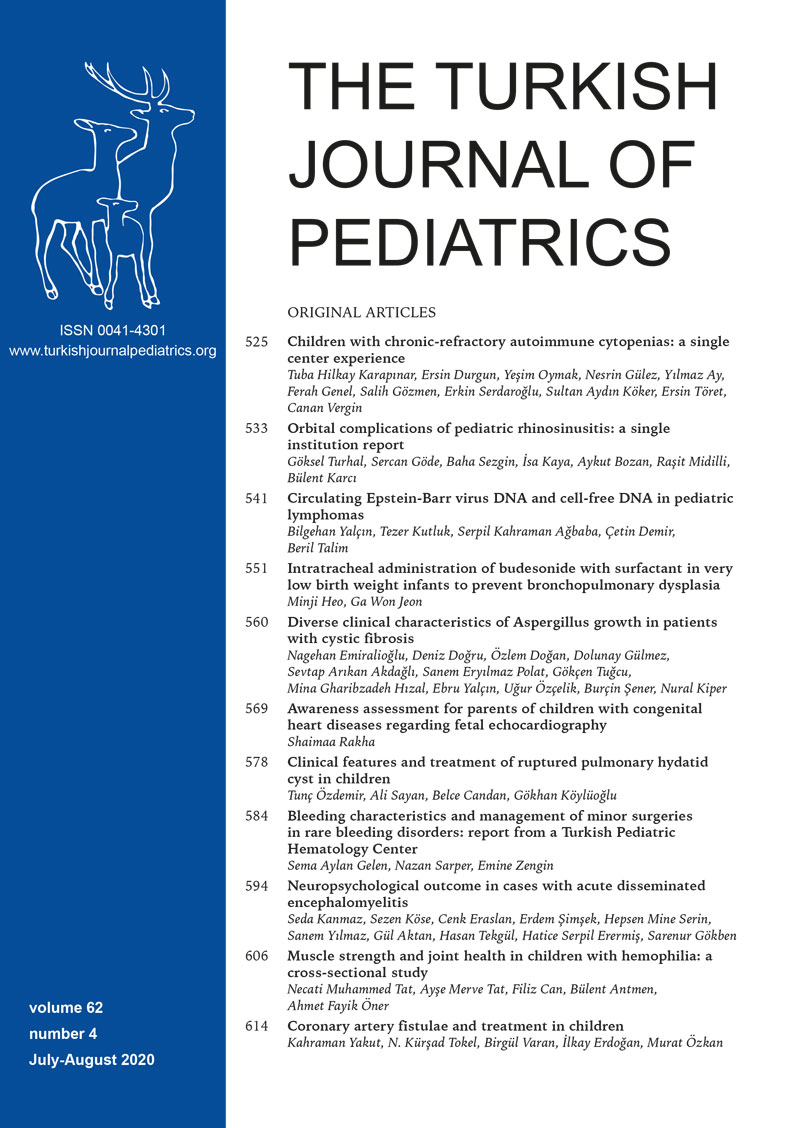Abstract
Background and Objectives. Hypersensitivity pneumonia is a complex condition due to exposure time, intensity, different clinical presentation, and treatment practices. We aimed to evaluate the patients that were diagnosed with hypersensitivity pneumonia (HSP) due to exposure to pigeons and a review of the literature for diagnosis and treatment of Pigeon Breeder`s Disease (PBD) in children.
Method. Between the years of 2009-2018, patients who were diagnosed with HSP due to PBD were included in the study in a pediatric pulmonology department. Findings of our patients, treatments, and prognoses were compared with 17 articles in the literature about PBD in children.
Results. In a 9 year-period, 6 patients were diagnosed as HSP due to PBD. The mean age of the patients was 8.8 ± 5.4 years and the average duration of pigeon exposure was 60.1 ± 6.5 days. Precipitating antibodies were positive in 3 patients. In four cases, symptoms were resolved with only prevention of pigeon exposure. Two patients who had close contact with pigeons needed oxygen supplementation and steroid therapy.
Conclusion. Hypersensitivity pneumonia should be considered for the differential diagnosis of patients that present with respiratory distress, cough, fever, and weight loss. Prolonged exposure and close contact may worsen the clinical symptoms. In most cases, only exposure prevention is enough, while steroid therapy, oxygen support, and intensive care monitoring may be required in severe cases.
Keywords: Pigeon Breeder`s disease, children, hypersensitivity pneumonia, interstitial lung disease
Copyright and license
Copyright © 2020 The Author(s). This is an open access article distributed under the Creative Commons Attribution License (CC BY), which permits unrestricted use, distribution, and reproduction in any medium or format, provided the original work is properly cited.














